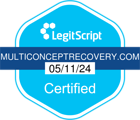Did you learn about the fine art of meditation on your journey toward recovery?
As demonstrated by numerous studies, meditation is effective in helping recovering addicts stay on the path of sobriety. Meditation curbs cravings, helps manage impulsive behavior, and allows individuals to seek comfort in a tranquil lifestyle.
Sometimes, though, it can be hard to break into the habit of meditation and mindfulness. Other aspects of recovery may prove to be a distraction, or perhaps you can’t seem to relax enough to make meditation possible. Here are five suggestions to help you make the best of meditation. Following these tips may make meditation an integral part of your life in recovery.
1. Try One-Minute Meditations
Did you know that meditation doesn’t have to last a long period of time to be successful?
In fact, short bursts of mindfulness and deep breathing can be even more beneficial than sessions that last a half an hour or more.
If you have trouble with traditional meditation sessions, start small. Set aside one minute for deep breathing. During this one minute, concentrate only on your breathing.
If you have a smartwatch, you may be able to take advantage of an app that guides you through one-minute breathing sessions, such as the one built into the Apple Watch.
This minute-long meditation session will clear your mind. Try it, and see if it tones down any feelings of anxiety you’re experiencing at the moment.
Try to incorporate these one-minute meditation sessions throughout your day. You can set aside one minute right before each meal, for instance. This way, you don’t have to keep track of how many breathers you’ve done so far. Build up to five minutes of meditation with five one-minute sessions throughout the day. This is the perfect strategy for you if you’re a very busy person with a hectic schedule.
2. Combine Meditation With Exercise
Do you have trouble being still during meditation?
Guess what? You can incorporate your meditating into movement. In fact, meditation combined with exercise allows for a greater release of endorphins, a type of hormone responsible for your good mood.
If you’re looking for a relaxed, low-impact type of exercise that can soothe you, pair your meditation with Yoga. This is a traditional pairing, and one recommended by meditation gurus.
Learn several basic Yoga poses and combine them with deep breathing and meditation. You can practice mindfulness as you move through several poses at a time, or stretch your endurance with a favorite pose.
If Yoga isn’t for you, try meditating while walking or jogging. Walking can be a healing experience, as it, too, releases endorphins. Set aside time in the morning for a jog, or take a quiet stroll each day after lunch.
As you walk, try to clear your mind of all thoughts. Focus on your steps along with your breathing. Before long, you will master meditation in motion.
3. Make Meditation Part Of Your Routine
Each of the above suggestions can carry you a long way toward mindfulness, but they won’t be as effective if they’re not a daily habit.
Try to make meditation a part of each day. Think of it as an appointment. Just as you fit recovery meetings into your schedule, so should you pencil in meditation.
Figure out which part of the day leaves you more anxious. When can meditation be most effective for you? If you’re a morning person, maybe you’ll find meditation first thing in the morning to be most helpful. If you have trouble sleeping, maybe meditation before bed can cure you of your insomnia. Experiment by scheduling sessions into various parts of your day. This way, you can find a way to make meditation a time to anticipate, rather than a chore.
4. Use An App Or Video To Guide Your Meditation
Are you stuck on how meditation is supposed to work?
If so, you’re not alone. It’s easy to be overwhelmed with the idea of mindfulness. It’s a skill you can only master through practice. For some people, meditation doesn’t work unless it’s guided.
You don’t have to wait for your therapist or Yoga leader to help you meditate, though. There are plenty of apps for any operating system that can teach you how to meditate. You can even use a video to walk you through a meditation session.
Find the tool that’s most helpful to you. Whether it’s a video or an app, make sure that your guided meditation is one you’re comfortable with. The visual aesthetics and user interface of a tool are just as important as the content.
5. Write To Meditate
Have you ever kept a journal?
You don’t have to be a prize-winning author to write. Recent research shows that basic forms of creative writing can be a therapeutic outlet.
When you feel like you cannot relax enough to meditate, try writing for five minutes. You can use a pen and paper or sit down in front of a blank computer screen. Write whatever comes to mind. It could be disjointed words or a group of sentences.
Even if you’ve never taken pen to paper since your school days, you can write to calm your mind. If it makes you feel better, tear the piece of paper or erase your file following your writing session. After you write, break into some deep breathing. The idea is to let the writing create space in your mind so that you can relax.
Have you tried any of the above tips before? Did any of the methods make meditation easier for you as a person in recovery? Feel free to share your story with us. If you need more help on your path toward recovery, contact us today. We can offer you gentle, innovative support to help you stay sober. Contact Multi Concept Recovery today by calling us at 1-866-569-7156 or visit our contact page for more information on how to get help for a drug or alcohol problem today.
